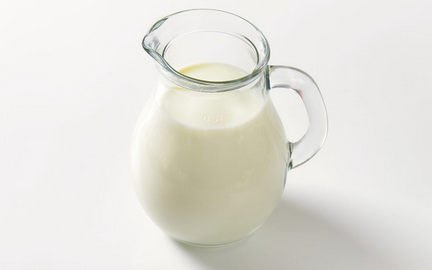At a glance…
The shelf life of bananas largely depends on their ripeness when purchased and how they are stored. Generally, unripe bananas can last up to one week when stored at room temperature. As they ripen, the bananas become sweeter and softer, but their shelf life decreases. Ripe bananas typically last for about 2 to 3 days. If you want to extend their freshness, you can refrigerate ripe bananas, which can prolong their shelf life by a few more days. However, the peel may darken in the refrigerator, although the fruit inside remains fine to eat. It’s important to note that these are just approximate timeframes, and factors such as temperature and handling can also affect the longevity of bananas.

As a fruit that is commonly found in households across the world, bananas are enjoyed for their sweet taste and versatility in recipes. However, as with all fruits, bananas have a limited shelf life, and it can be frustrating to purchase a bunch only to find them turning brown and mushy within a few days. In this article, we will explore the factors that affect banana shelf life, how long you can expect your bananas to last, and tips for extending their lifespan.
Whether you are someone who enjoys bananas as a quick snack, in smoothies, or in baked goods, knowing how long they can last is essential for avoiding waste and ensuring that you always have fresh fruit on hand. So, let’s dive in and discover everything you need to know about banana shelf life!
Factors Affecting Banana Shelf Life
Find out what affects how long your favorite yellow fruit stays fresh! Storage conditions and ripeness level are two factors that play a significant role in determining the shelf life of bananas. Proper storage conditions can help extend the life of your bananas.
Bananas should be stored in a cool, dry place away from direct sunlight. A pantry or a kitchen counter is ideal for storage. Avoid keeping them in the refrigerator as it can cause the bananas to turn brown quickly. Additionally, keep them away from other fruits that emit ethylene gas, such as apples and pears, as this can cause the bananas to ripen and spoil faster.
The ripeness level of the bananas also affects their shelf life. If you buy bananas that are already ripe, they will only last for a few days. However, if you buy bananas that are slightly green, they will last longer. You can also slow down the ripening process by wrapping the stem of the bananas with plastic wrap. This helps to trap the ethylene gas produced by the bananas and slow down the ripening process.
By taking care of the storage conditions and ripeness level of your bananas, you can extend their shelf life and prevent wastage. Remember to keep the bananas in a cool, dry place away from direct sunlight and other fruits that emit ethylene gas. Buy bananas that are slightly green and wrap the stem with plastic wrap to slow down the ripening process. With these tips, you can enjoy your favorite yellow fruit for longer!
How Long Do Bananas Typically Last?
Discover the shelf life of this popular fruit with a quick glance at how many days you can enjoy its sweet, creamy flavor. The length of time that bananas can last depends on several factors, including the banana ripening process and storage techniques. But generally speaking, bananas can last anywhere from a few days up to two weeks. Here’s a quick rundown of how long bananas typically last:
- If you prefer your bananas on the greener side, they can last up to a week before they start to turn yellow and ripen.
- Once bananas have started to ripen and turn yellow, they typically last for 2-3 days before they become too soft and mushy to eat.
- If you’ve got some overripe bananas that are starting to turn brown or black, don’t throw them out just yet! They’re perfect for making banana bread or other baked goods, and can last up to a week if stored properly.
To make your bananas last as long as possible, it’s important to store them properly. Avoid placing bananas in direct sunlight or in overly warm areas, as this can speed up the ripening process. Instead, store your bananas in a cool, dry place, such as a pantry or cupboard. You can also slow down the ripening process by separating bananas from each other and wrapping the stems in plastic wrap.
Signs of Spoiled Bananas
You can easily tell if your bananas have spoiled by checking for mold growth, unpleasant odors, and a mushy texture. Mold growth on bananas is an obvious sign of spoilage, and if you see any, it’s best to throw them away immediately. Fruit flies are also attracted to overripe bananas, so if you see any buzzing around your fruit, it’s a good indication that they have gone bad.
Unpleasant smells are another sign that your bananas are no longer fresh. If you detect a sour or fermented odor, it’s time to toss them out. This smell is caused by bacteria that thrive in warm and humid environments, and overripe bananas provide the perfect conditions for them to grow. So, if you notice any foul odors, don’t take any chances, and get rid of them.
Finally, a mushy texture is a clear indication that your bananas have gone bad. As bananas ripen, their texture becomes softer, but there’s a fine line between a ripe and overripe banana. If your bananas feel too soft and squishy, they are no longer good to eat. Overripe bananas are also more susceptible to bruising and damage, which can accelerate spoilage. So, if you’re unsure about the freshness of your bananas, always err on the side of caution and throw them away.
Tips for Extending Banana Shelf Life
If you want to keep your bananas fresh and delicious for as long as possible, here are some simple tips to follow. First, it’s important to properly store your bananas. You should always keep them at room temperature until they are fully ripe. Once they are ripe, you can store them in the refrigerator to slow down the ripening process. However, be aware that the skin may turn brown in the refrigerator, but the inside will still be delicious.
Another tip for extending banana shelf life is to separate them from the bunch. This is because bananas produce a gas called ethylene as they ripen, which can cause other fruits and vegetables to spoil faster. By separating your bananas from the bunch, you can slow down the ripening process and keep them fresher for longer. You can also wrap the stems of your bananas in plastic wrap to further reduce the amount of ethylene they produce.
Finally, if you have bananas that are starting to get too ripe, don’t throw them away! Instead, you can freeze them and use them later for smoothies or baking. Simply peel the bananas and place them in a plastic bag or container in the freezer. When you’re ready to use them, let them thaw for a few minutes before blending or baking. With these simple tips, you can extend the life of your bananas and enjoy them for even longer.
Creative Uses for Overripe Bananas
Now is the time to get creative with those overripe bananas sitting on your counter, so let’s explore some delicious and inventive ways to use them up. Don’t throw them away just yet, as they can still be used in a variety of tasty and healthy ways. Here are four ideas to get you started:
- Banana Bread – This classic recipe is a great way to use up those overripe bananas. Not only is it easy to make, but it’s also a crowd-pleaser. You can make it as healthy or as indulgent as you like, depending on your preferences. There are also many variations, such as adding nuts or chocolate chips.
- Smoothies – Overripe bananas are perfect for adding a natural sweetness to smoothies. Simply blend them up with your favorite fruits and vegetables for a nutritious and delicious drink. You can even freeze the bananas beforehand to make the smoothie even creamier.
- Banana Pancakes – If you’re looking for a healthier breakfast option, try making banana pancakes. They’re easy to make and are a great way to use up those overripe bananas. Plus, they’re gluten-free and dairy-free, making them a great option for those with dietary restrictions.
- Composting – If you don’t feel like using your overripe bananas in a recipe, consider composting them instead. They make great additions to a compost pile, as they’re high in potassium and other nutrients that are beneficial for your garden.
Don’t let those overripe bananas go to waste! Try out one of these ideas today and see how creative you can get in the kitchen.
Conclusion
In conclusion, understanding how long bananas last and how to extend their shelf life can help prevent food waste and save you money. Factors such as ripeness, storage conditions, and exposure to ethylene gas can all impact banana longevity. Generally, bananas last about 2-7 days at room temperature and up to 2 weeks in the refrigerator. However, with proper storage and handling, bananas can last even longer.
If you find yourself with overripe bananas, don’t throw them away! There are plenty of creative uses for them, such as making banana bread or smoothies. By following these tips and getting creative with your overripe bananas, you can make the most out of this delicious and nutritious fruit.





